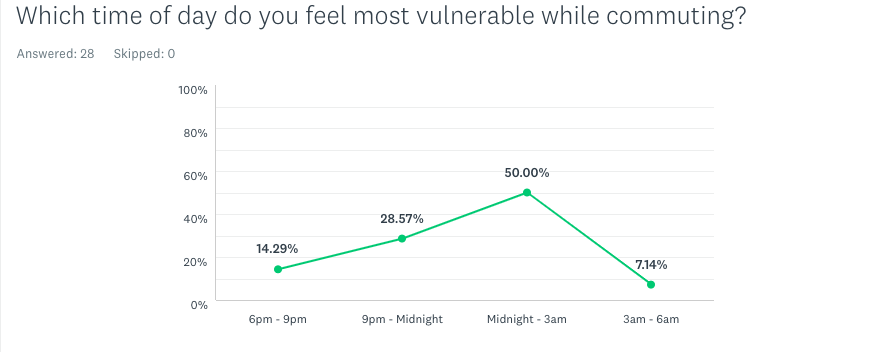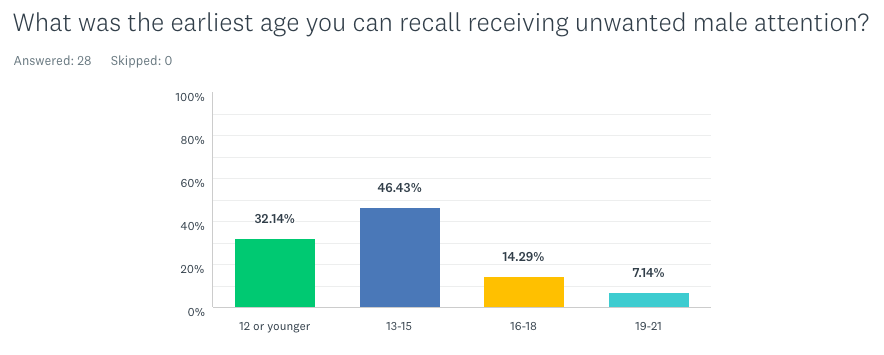Week 3 - Defining & investigating the problem
- rosieglenwright
- Oct 4, 2019
- 2 min read
Updated: May 3, 2020
After researching homelessness in more detail I decided to shift my focus onto the vulnerability of young women and their exposure to sexual harassment in urban environments. I have found a sociological issue that I am passionate about and I now need to focus on getting primary sources of research.
Street Harassment
During this week I will be gathering primary research, I have created a survey so I can get a better understanding of the amount of people affected by this problem. I have also conducted a few interviews with some women so I can ask more questions and get more in depth answers.
The survey questions are related around women's exposure to sexual harassment, I wanted to get first hand research of how many women experience this in everyday life. Doing this survey will help me generate key insights that I can use to take my research further and scope out potential design solutions.
One of the statistics I found most surprising was the age that young girls first experience unwanted male attention. 80% of the responses were aged 15 or younger! This shocked me but also didn't surprise me, being so young girls don't realise the full extent of this problem which suggests a reason why men may target them at such a young age.
Another statistic that intrigued me was the amount of women that feel responsible for being harassed. The presence of victim blaming is clear here, 65% of women felt somewhat responsible, questioning maybe if they'd worn something less revealing maybe they wouldn't get attention. This is where the problem stems, women shouldn't be taught to cover up, men should be taught not to stare.
The last question that drew in my attention was the amount of women that have been sexually harassed in public places. You would expect that in public you could guarantee that no such thing would happen because surely people around would help or say something. 80% of the women that responded admitted to being either verbally or physically (or both) sexually harassed in public. Despite living in a society that is so educated about the growth of women's rights and their journey to equality the statistic is frightening. People either know it is unacceptable and choose not to care or people are merely uneducated about where the line is drawn.
Key Insights
Young women and girls are learning from a young age that sexual harassment is something they just have to deal with and tolerate.
Men are wilfully ignorant that they are sexually harassing women and their actions are unacceptable.
Women have been made to feel responsible for this behaviour because society tends to blame the victim more than the perpetrator.
Even in public places women face a high risk of physical sexual harassment because despite society changing views of acceptance overtime - some individuals behaviour has not.
Not only are women are forming casual link between their choice of clothing and the harassment they receive, but they are also clearly connecting the entitlement strangers feel to their bodies with a fear of sexual violence and assault.
Next steps
Narrow down research and define topic
























Comments